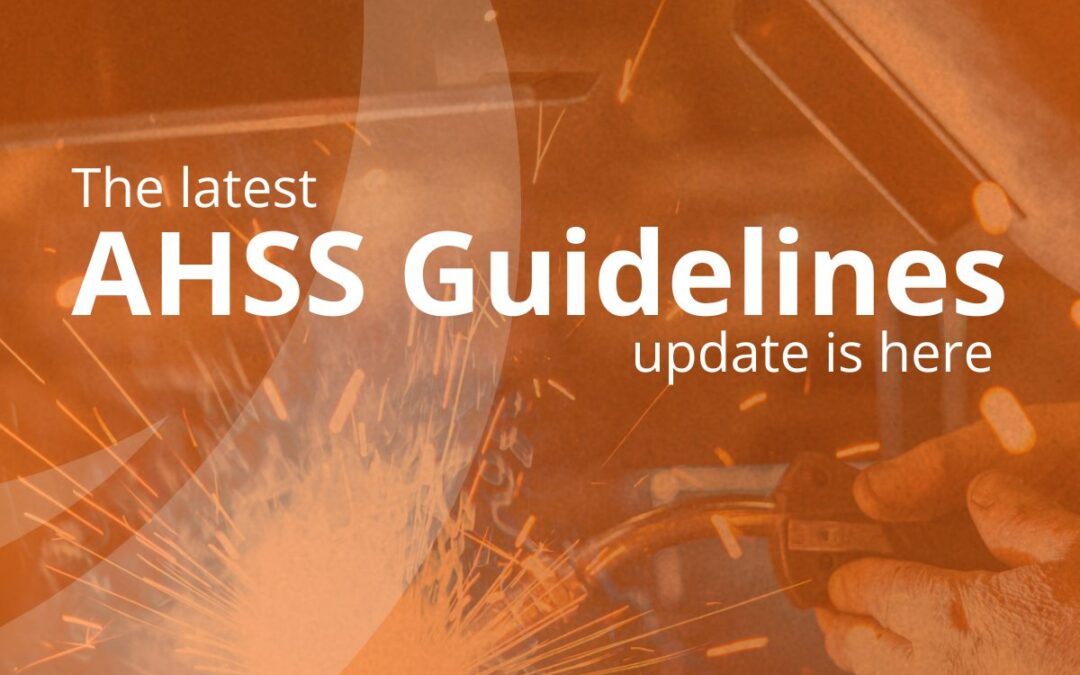
WorldAutoSteel Releases Latest AHSS Application Guidelines
Smarter Engineering for Tomorrow’s Vehicles
In the fast-evolving world of automotive engineering, the ability to innovate safely and efficiently is paramount. Advanced High-Strength Steels (AHSS) have become the backbone of modern vehicle design. In less than a decade, the AHSS portfolio has nearly doubled—from 38 commercially available grades in 2017 to nearly 70 today—giving automakers unprecedented flexibility to design lighter, stronger, and more sustainable vehicles.
WorldAutoSteel’s newly updated 2025 AHSS Application Guidelines give engineers and designers the knowledge and process confidence they need to master these advanced steel grades and apply them with precision.
What’s New in the AHSS Application Guidelines?
The updated resource reflects a global shift toward smarter, data-driven engineering, offering practical insights into metallurgy, forming, and joining techniques that optimize performance while reducing mass, risk, and production time. Key highlights include:
Smarter materials: AHSS grades and coatings are engineered, characterised, and applied as systems. Chemistry, microstructure, coating, forming route, and joining method are designed together to deliver exactly the performance needed with less mass, lower risk, and faster industrialisation.
Smarter forming: Expanded guidance on simulation and testing support an increasingly digital, “first-time-right” culture in body-in-white engineering, where forming processes are validated virtually before any physical tooling is committed, to reduce costly trial-and-error on the shop floor. New techniques and testing explanations help engineers understand the failure mechanisms that may limit the application of advanced grades.
Smarter joining: New recommendations on techniques such as paint-bake hardening, crash-rate testing, and MIG brazing echo a more data-driven, coatings-aware, and crash-validated approach to joining, ensuring each joint delivers the required strength, ductility, and durability with minimal mass, heat, and risk. For example, new methods for assessing spot weld strength and understanding the effects of bake hardening help manufacturers optimise lightweighting and crash performance. The expanded section on arc welding offers quick, practical tools for engineers, especially those new to AHSS, to avoid common mistakes and ensure robust joints.
The Guidelines also address the unique challenges posed by the shift to electric vehicles (EVs), such as protecting batteries while maintaining lightweight structures and stiffness.
Press hardening steels (PHS) are highlighted as a key tool in automotive body structure design, with new applications and strategies for tailored parts that combine high and low strength in a single stamping.
By curating the latest evidence and technical best practice for AHSS into a single, accessible resource, WorldAutoSteel is supporting the industry’s drive for continuous improvement. As new challenges and opportunities emerge, the Guidelines put lighter structures, outstanding crash performance, faster industrialisation, and lower lifecycle emissions well within reach.
Access the latest AHSS Application Guidelines
Join technical editors Dr.-Ing. Max Biegler and Dr. Danny Schaeffler for a free steelTalk webinar on 2 December, offering an overview of the latest updates and best practices. Register here.



